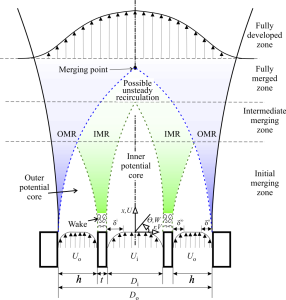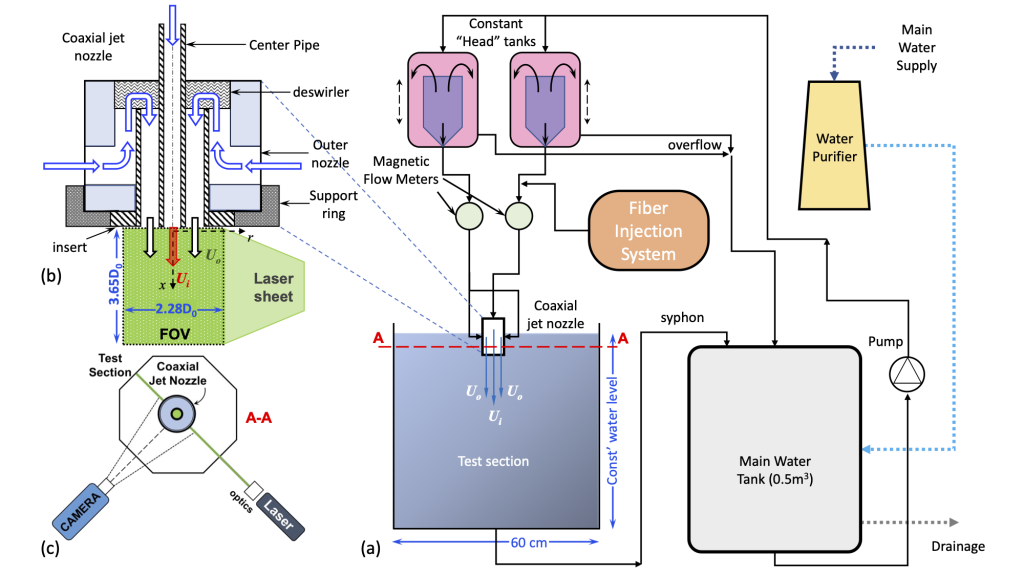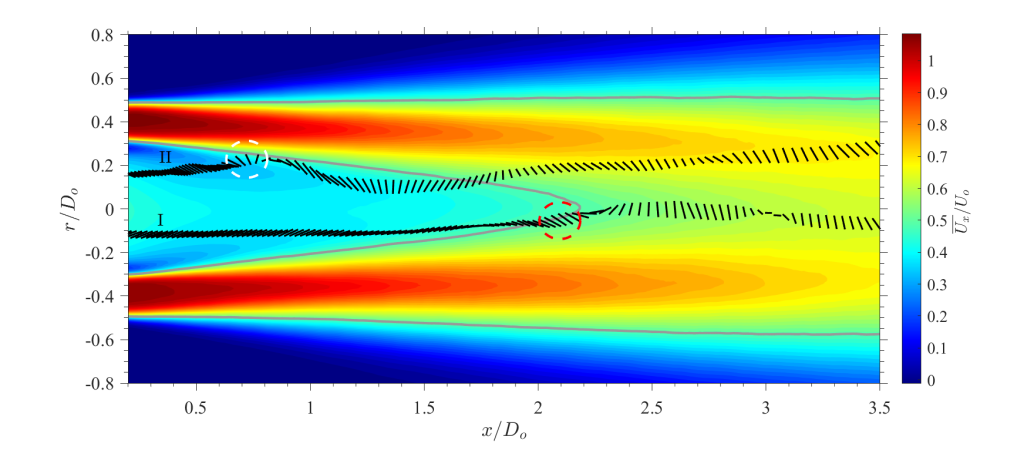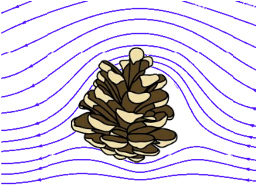Particle-turbulence interactions occur across a wide variety of natural as well as industrial processes. Despite the enormous progress in the understanding of turbulent dispersion of spherical particles, es- pecially in homogenous isotropic flows and non-homogeneous channel flows, there are still many open questions regarding the interaction of non-spherical, anisotropic particles with turbulent flows. In par- ticular, one may ask how shape, size and inertia affect particle-turbulence interaction and ultimately dictate the rotational and translational particle dynamics. Understanding and controlling rotational and translational particle dynamics has practical significance, for example for composite materials composed of fibrous material whose orientation governs the strength, porosity and other desired ma- terial properties (e.g. optical ones). One of the ways to deliver particles to a surface is by means of one or multiple impinging jets.

Schematic of coaxial round jet
In the here proposed research, the focus is on rod-like particles (fibers); their rotational and translational dynamics are explored in an (impinging) co-axial jet. The basic research question that we want to answer is: “can the shear layer instabilities in the near-field flow of an (impinging) coaxial jet be fine-tuned in such a way that fiber separation and/or alignment can be controlled upon impingement and deposition of the fibers?”.

Experimental setup
Project funded by the Israel Science Foundation (ISF) under grant number: 2199/19
Students working on the project:
David Hasin (PhD), Yoni Reingewirtz (MSc)

Fiber tracks superposed on mean axial velocity field
